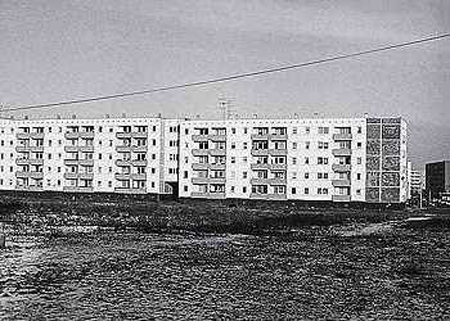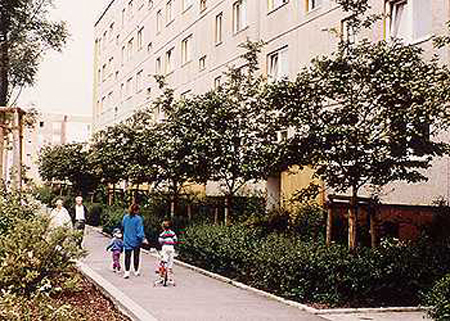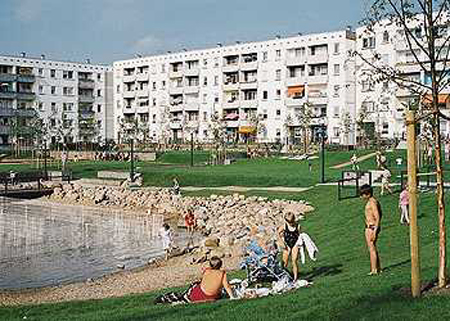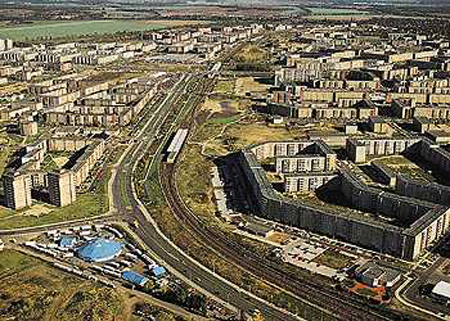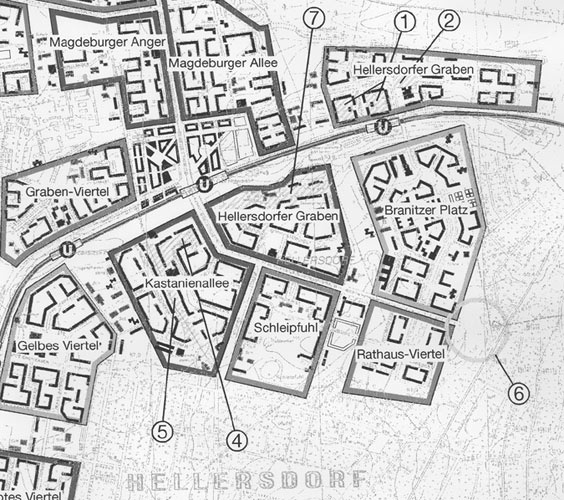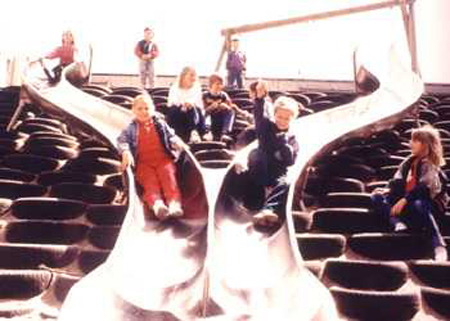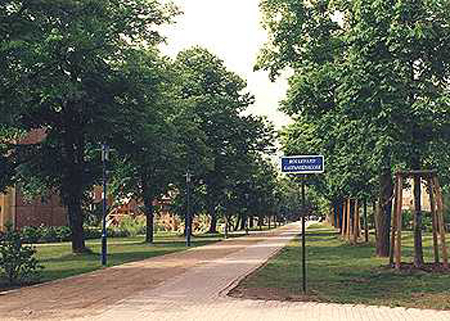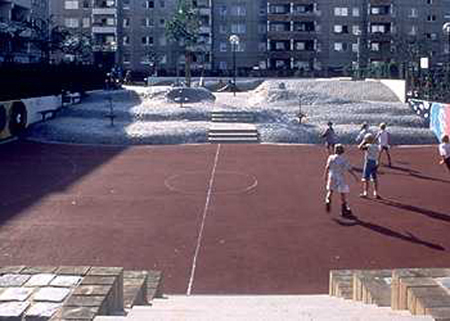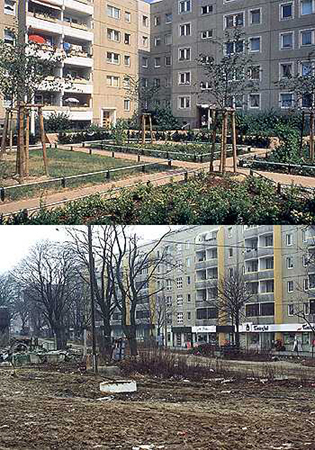Previous state
After reunification, differences in the urban reality of Berlin became apparent. In the East, large-scale housing estates consisting of 273,000 dwellings, housed 20% of the population, whereas only 6% of West Berlin's inhabitants lived in this type of dwelling. For fifty years the housing policies of the GDR had involved the large-scale construction of buildings made from prefabricated concrete slabs. The aim was to solve the housing problems for large sectors of the population and to offer affordable housing through an intervention which clearly sought to conquer the periphery of large cities.The city of Hellersdorf is a sector of new buildings located in the north-eastern periphery of Berlin on disused farmland. Building work started in 1985 and was incomplete when the Berlin Wall fell.
The project envisaged 60,000 dwellings, 45,000 of which were actually built. Building focused on housing, but due to a series of financial problems, a number of public infrastructures and facilities which were also planned, were never built. The development of public space was left unresolved, as in many other residential complexes, and the land between blocks -which was to be the site of facilities and areas for common use- remained an undefined intermediate space overrun by poor vegetation. Shortly after the blocks of prefabricated concrete were built they showed major signs of deterioration. At the same time, and because of the change in the politico-economic system, the social fabric living on the large estates was affected by the increasing rise in unemployment rates and by the precarious situation of the middle classes.
Aim of the intervention
In 1992, the Senate of the Land of Berlin decided to preserve the large-scale housing estates of the former East Berlin. The aim was to transform them into pleasant urban districts and, in particular, to implement a strategy which would safeguard the fragile social balance characteristic of the prefabricated-concrete districts, and thus avoid the departure of young people from the area.The large-scale estates of the former GDR share, with other places in Europe, an architectural monotony and an absence of quality green spaces for public use and facilities; nevertheless, they are clearly different from the latter due to their greater social balance and mix.
In fact, the surveys carried out over the years that followed showed that the quality of life in these districts was considered good.
This strategy of the Land, which worked alongside the inhabitants of the Hellersdorf district and the Hellersdorf developers (WoGeHe), sought, as in other cases of large-scale housing, to integrate the district better into the functional structure of the German metropolis. The interventions carried out included programmes to improve the environment based on sustainable approaches, to refurbish dwellings, to renew central-heating systems making them more cost-effective in terms of energy output and, as one of the important planning measures, to develop public green spaces and create urban centrality. Interest in this measure was even greater due to the changes in lifestyle which had occurred in the social fabric of the former GDR, and which led to the assessment of the quality of spaces near dwellings. One piece of information is clear: over 90% of the residents polled in a survey stated that the development of green spaces on unoccupied land between blocks was the most important intervention in improving the city of Hellersdorf.
Description
The most far-reaching measure, with regard to surface area, and the most noteworthy in terms of the external image of the housing estate, involved the planting of trees in public spaces, which took place between 1990 and 1995.Specifically, these involved the creation of gardens in front of the blocks, and strips of grass between the pavement and the streets which were planted with trees and bushes. A total of 3,600 trees were planted over a surface area of 62,000 m2; 55,000 m2 of gardens were laid out at the front, and, at the same time, a project for covering the fronts of the buildings with plants was carried out.
Between 1993 and 1995, a specific programme involving the creation of play areas and spaces for playing ball games was implemented in the inner courtyards of the blocks. This stemmed from the fact that Hellersdorf is the youngest district in the city (a third of the population is under 18). The aim was to eradicate the shortcomings of the inner courtyards and to create a choice of games which would be thematically diverse and appeal to different ages. Twelve football pitches were refurbished and twenty-five sports areas built. This range of facilities was an independent measure which did not seek to substitute the wider improvements which were beginning in the residential area. In this way, the manifest need for an immediate range of sports facilities could be catered for, without having to wait until general financial conditions allowed overall intervention in interior courtyards.
In order to carry out a homogeneous and ongoing urbanistic development throughout the estate, which would also be individualised in terms of sectors, it was divided into 18 residential groups or districts where, besides the green spaces and play areas, core spaces were created in which different squares were designed on the scale of a small city or district square. As examples of interventions on housing estates, we can highlight the cases of Leipziger Tor, Dresdner Viertel and Stollberger Strabe. And as an example of creating a multifunctional space, we should mention the intervention in the Kastanienallee, a real avenue which performs the functions of a residential and shopping street equipped with all the elements required by a public space (rest areas, play areas, landscaped areas and entrances to shopping centres).
Assessment
Green frontages, gardens for residents, play and rest areas and a great number of recently planted trees: the change in Hellersdorf is plain to see. The concepts of intervention applied to specific districts have contributed to breaking the monotony of the estates as a whole and have provided these districts with their own image and characteristic identity. The immediate future will see the completion of a large central green area known as the "Hellersdorf Graben". Hellersdorf will subsequently have a city centre which will bring together shops and offices as well as the services and infrastructures required by the whole city.(City Hall...).[Last update: 02/05/2018]


